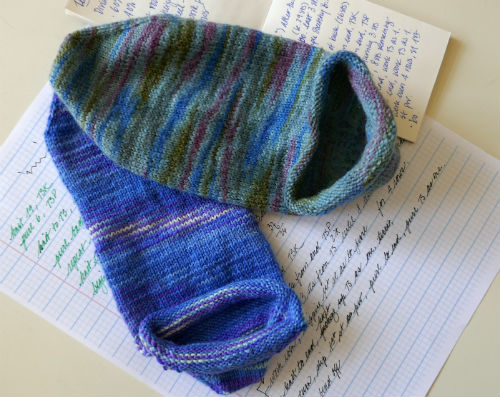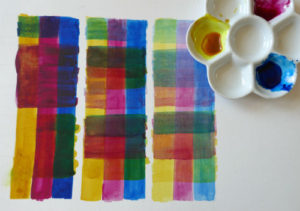If you go back and look at the color chart I posted yesterday, my favorite green is the indigo overdyed with osage orange. The result is a very clear green (left stripe, second square from the bottom in each strip) compared to the osage orange overdyed with indigo (top left square in each strip).
Now, this next bit is hearsay … I’ve heard it in some natural dye classes but have not been able to confirm this from internet nor book research (from my personal natural dye library of 4-5 books). Please take this with a grain of salt and drop me a note with references if you have more information one way or the other.
Unfortunately, I won’t be able to apply the indigo first, osage orange second at this weekend’s workshop. Indigo doesn’t bond to the fiber the same way that typical natural dye does. The indigo pigment actually nestles into the fiber rather than chemically bonds to the fiber. This is why your jeans, if truly indigo dyed, will fade in creases. That is where the pigment rubs off.
Anyway, what this means is that indigo can be released again in another dye pot, thus alter the dye pot for everyone else in the class. We were advised not to try this unless it is at the very end of the workshop. However, that means the dye may be exhausted and I wouldn’t be able to get accurate medium on medium dye strength.
I might try this myself at home to see what the color variations might be with indigo last vs. indigo first.


